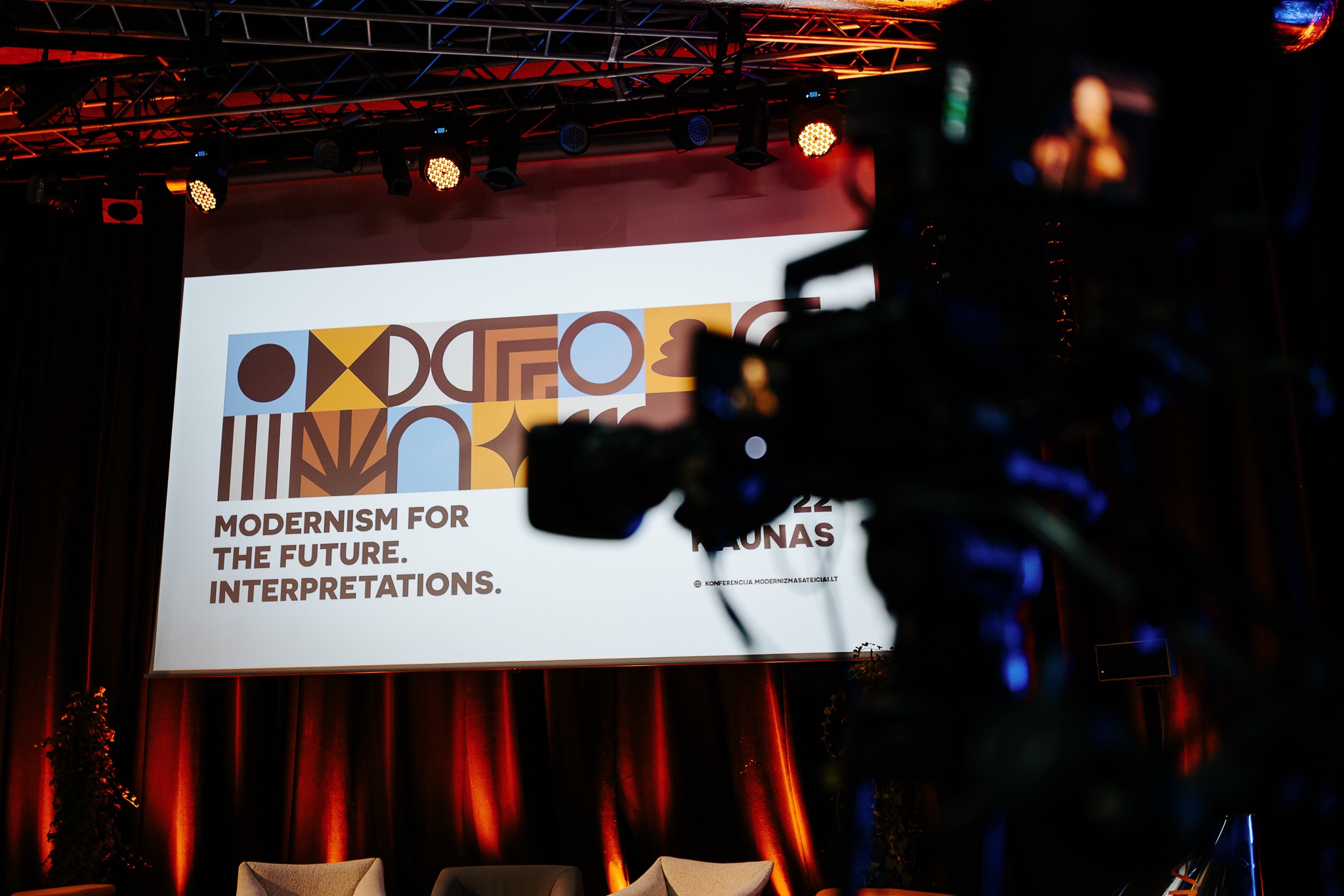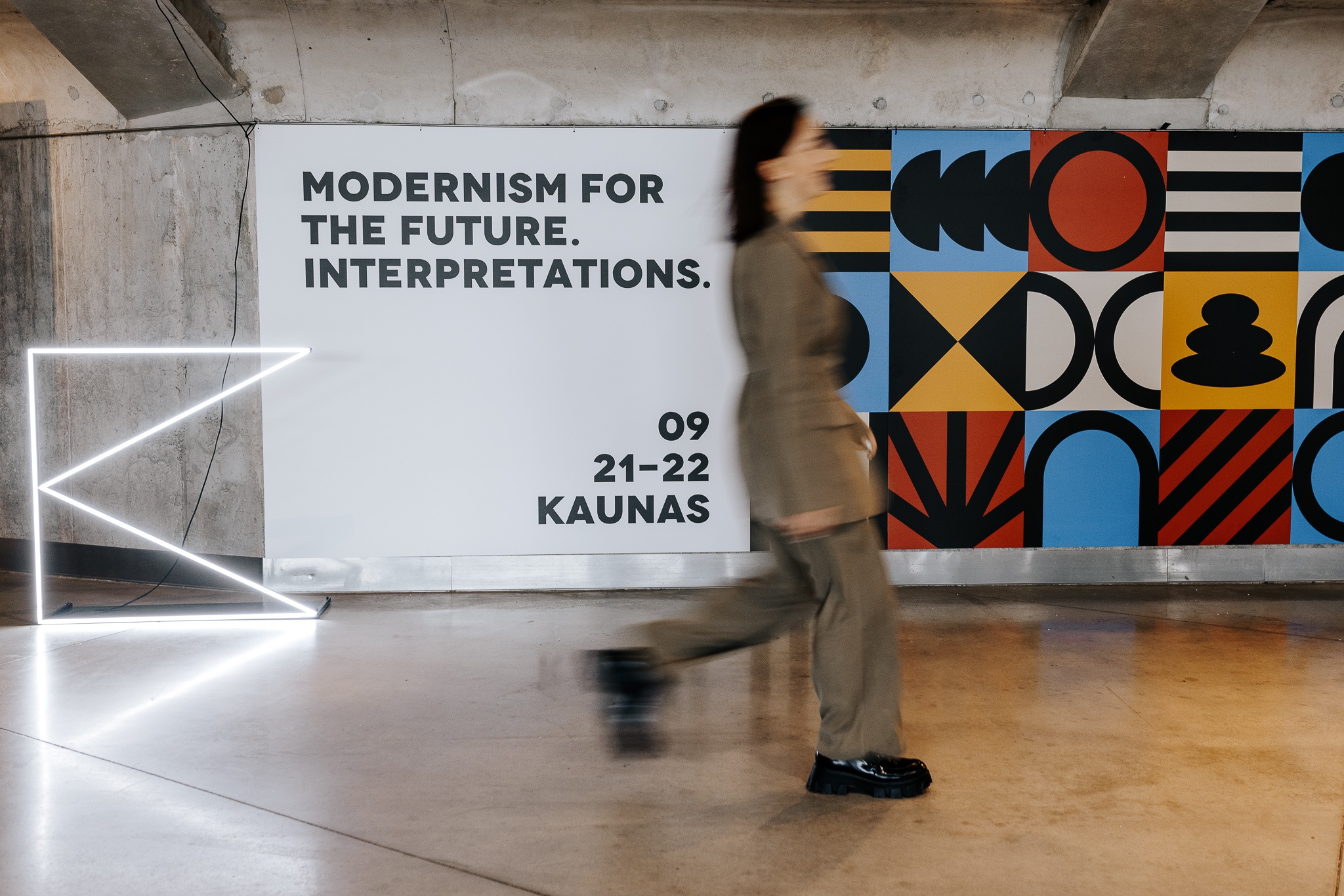
“Architecture is always a dream and a function, expression of utopia and instrument of comfort”, Vaidas Petrulis, one of the organisers of the final conference of the European Capital of Culture’s programme “Modernism for the Future”, opened the event with a quote from the French philosopher Roland Barthes. The event attended by a wide range of thinkers and practitioners to Kaunas offered unexpected ways of talking about the inevitably shared past, present and future of our planet; the history in which architecture plays the role of both antagonist and protagonist.
“Multiple modernisms”. Uta Pottgiesser, professor at Delft University in the Netherlands and head of DOCOMOMO, the international organisation that documents and conserves the heritage of modernism, was the first to use this term to describe an era that has touched the entire planet. The two words became the leitmotif of the day.
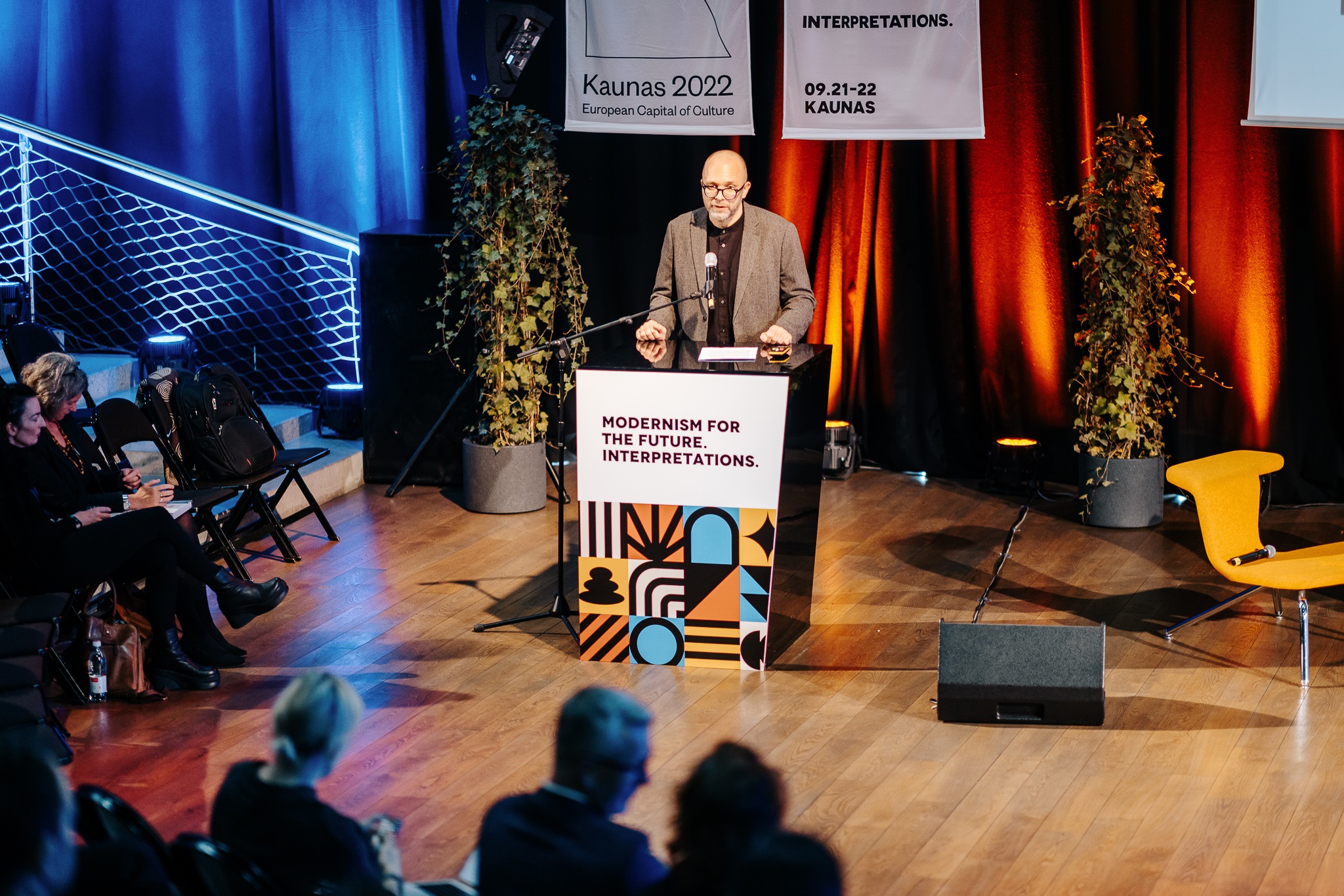
Inspiration is not Only in Buildings
The subtitle of the second edition of the conference was “Interpretations”. Aideen Barry, an Irish artist working with communities worldwide on socially engaged art, opened the programme with a presentation of her stop-motion animation film, “Folds/Pleats”. Its premiere was held on the inaugural night of the conference at the historic Romuva cinema. The two-year-long artistic chain of events was full of coincidences, as well including hours-long workshops on Zoom during the quarantine, iconic Kaunas modernist buildings becoming dancers’ costumes and edible cakes, as well as hundreds of Kaunas residents of all ages who joined the process. The film, inspired by early cinema and animation created behind the Iron Curtain, has already been presented around the world. It is not a documentary but a freely interpreted history of the modern city and the people who created it, enticing even the viewer who has never heard of Kaunas before.
At 3 am New York time, artist, architect and conservationist Jorge Otero-Pailos joined the event in Kaunas. His online talk on art as a way of care and dust and other traces of time in architecture as inseparable layers of its layers received an ovation and was quoted in subsequent presentations. After presenting his project “The Ethics of Dust”, in which the cleaning of the surfaces of historic buildings becomes a pretext for contemporary works of art, the artist talked about his most famous initiative, which took place in the Norwegian capital. Unlike the modernist masterpiece itself, the fence of the US Embassy in Oslo was not included in the list of protected buildings. Otero-Pailos decided to turn this element, which surrounded the embassy after 11 September 2001, into an independent series of sculptures.
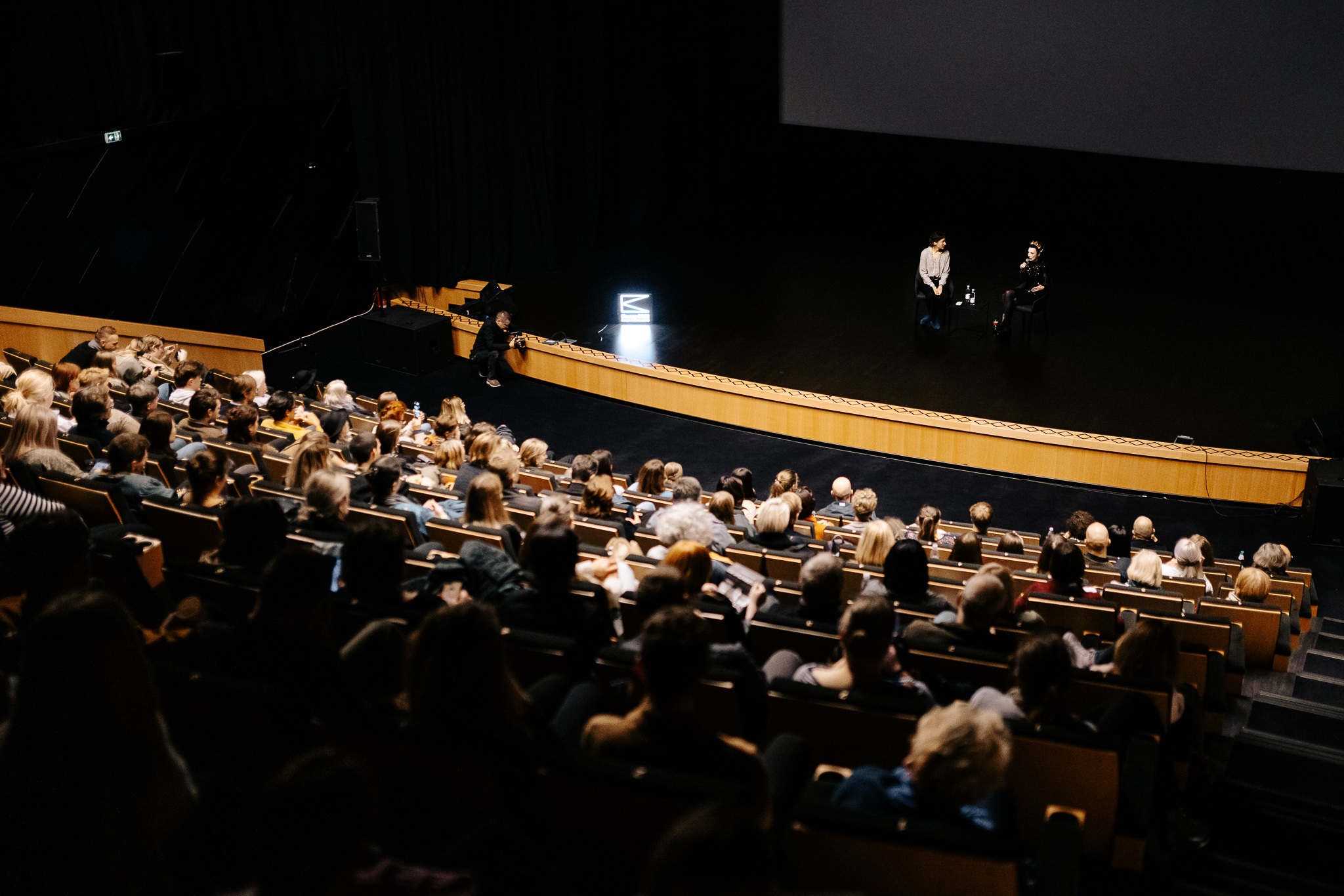
G. Jovaišos nuotr.Subjectivity as a Component of Objectivity
In the afternoon, the conference participants were attracted by a discussion on the concept of subjectivity as an assessment of art, architecture and heritage viewed from different perspectives. Researcher Grzegorz Piątek spoke about the unconditional love of Poles for the interwar period, and thus for the country created at that time, as a breakthrough, a growth, and even a golden age. Contrasting this is the sceptical attitude towards the residential areas, cultural and commercial buildings and other objects that popped up after the Second World War. Paradoxically, the extremely popular Neon Museum in Warsaw only displays the signs of historic buildings, many of which no longer exist today. Lolita Jablonskienė, head of the National Gallery of Art in Vilnius, emphasised the importance of context (or the contexts that have been considered separate until now) in evaluating architecture and art produced in the past decades and the duality of the two. Swiss photographer Nicolas Grospierre, who has been photographing modernist architecture for two decades, spoke of his subjective concept of constructing a narrative through related forms, excluding other factors.
“Mythologizing comes in cycles. It’s interesting to break this cycle, which is possible after defining a set of criteria that could facilitate that break. It is important to look into history objectively as early as possible,” noted Piątekas. “People prefer Stalinist-era because they are better decorated, subjective emotional ties and associative values play an important role here,” added architectural historian Marija Drėmaitė, moderator of the panel.
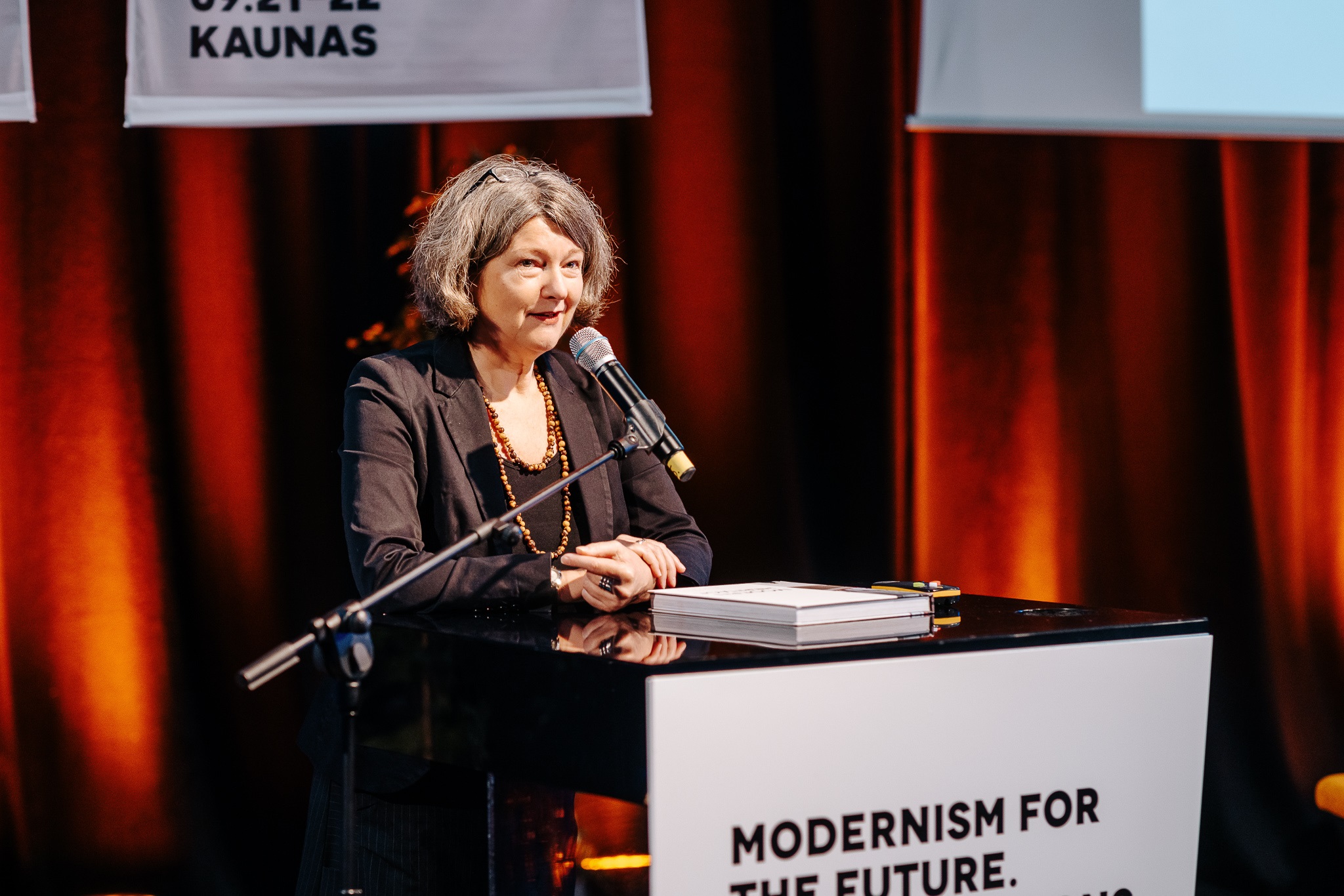
Modernizmo konferencija, G. Jovaišos nuotr.Modernism – a Cause and/or a Product of the Anthropocene?
The heritage of the recent past is paradoxical – it belongs to modernity, but the consequences of modernity pose an existential threat to it. A discussion moderated by Edward Denison of the Bartlett School of Architecture at the University College London (UCL) in the UK invited people to think about modernism as the cause of the current geological epoch. Denison’s colleague Guang Yu Ren presented the Manchuria region in present-day China, a land little known to many present-day Europeans, where modernist cities were planned as early as the late 19th century, as industrial mines were established. In the region, what we consider heritage may, in fact, belong to several nations, including the Russians and Japanese.
The open question of whether the colonists gave anything at all to the African continent, from which they drew their wealth and empires for many decades, and in return imported their way of life, customs and architecture was raised by Maxwell Mutanda of UCL. Linara Dovydaitytė, a scholar at Vytautas Magnus University, presented the object of her research – the nuclear heritage, which is inseparable from the colonial era, as well as the nuclear aesthetics and the interpretation of the industrial heritage in art.
Alessandro Petti online from Sweden presented Decolonising Architecture Art Research, a project he runs with Sandi Hilal. One of their missions is to inscribe the Dheisheh refugee camp in Bethlehem, Palestine, on the UNESCO World Heritage List. Israelis settled in the site of dozens of former villages after 1948. According to Petti, such camps, which are not made of tents but concrete structures, are doomed to permanent temporariness and are built to be forgotten as soon as possible.
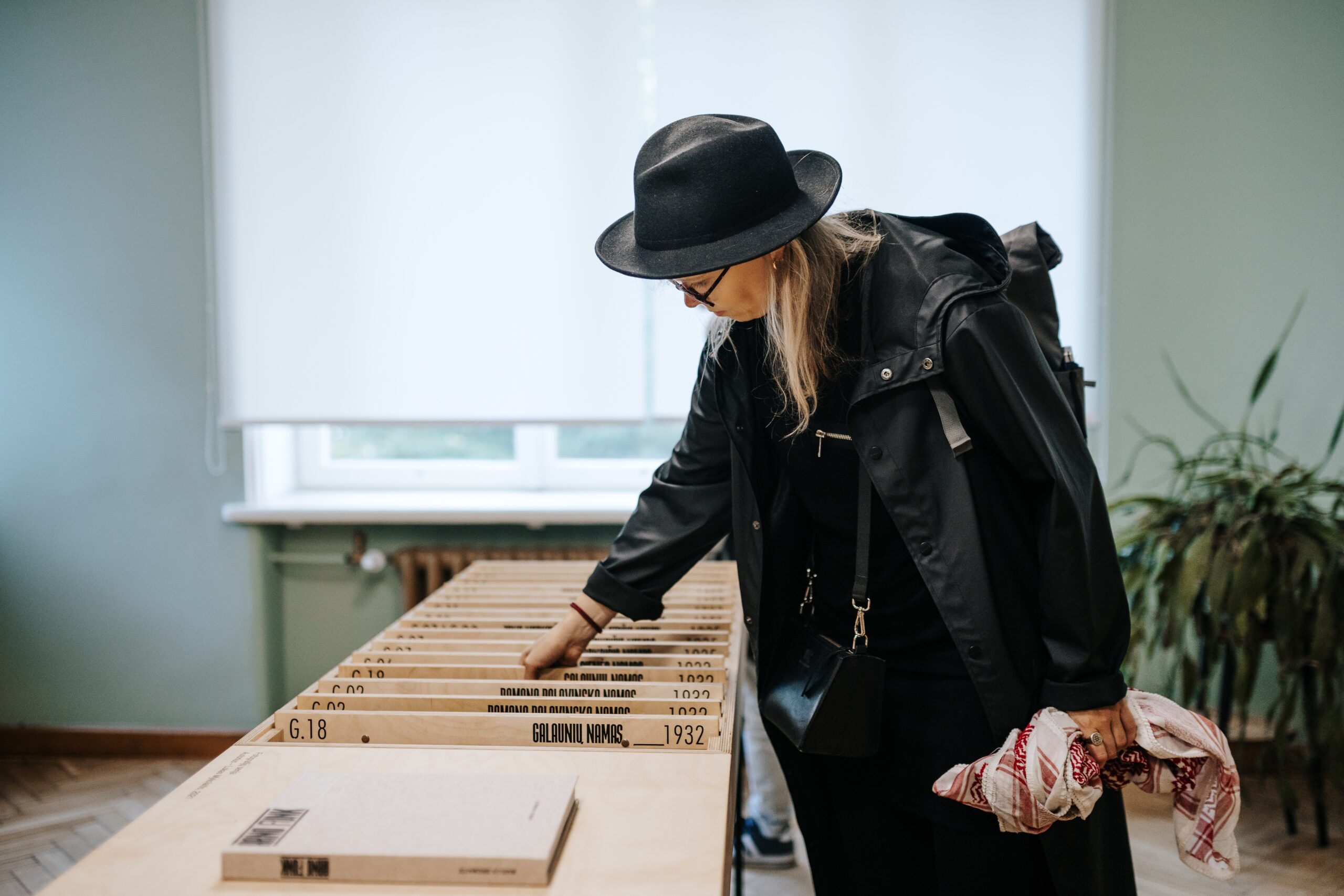
A Dispute about Value – Public or Professional?
“We have spent many years discussing what to do with Soviet apartment blocks. Well, the Russian missiles just destroyed them, so that’s one less question,” Yevgeniya Gubkina, a Ukrainian architectural historian and self-proclaimed architectural activist who hails from Kharkiv, which was severely damaged by the war earlier this year, wryly and very aptly observed. Equally ironic was the British journalist and writer Owen Hatherley, who observed that nobody likes Western leftists coming to Eastern Europe and explaining what Soviet modernism is. Hatherley put forward an equally intriguing theory about the actual Westernness of modern Russian imperialism, reminiscent of colonial powers and their methods.
The debate moderated by Maxime Forest again stressed the geographical and political diversity of modernisms and the absence of a unified public opinion. “Often the debate about what to do with Soviet architecture is only raised by professionals – people are not bothered by it, they are affected by the emotional connection,” mentioned Gubkina. She also reminded us that architecture is just a tool – we do not judge a knife for murder. The thought of architecture and art critic Aaron Betsky, who said: “Buildings don’t talk, so we have to speak for them”, is also relevant here.
Discussions and presentations of the conference “Modernism for the Future. Interpretations” took place on 22 September in the Žalgirio Arena amphitheatre. The recordings and a series of podcasts will be published online. The main conference programme was introduced and followed by additional meetings, exhibitions and other events in various locations in the historic centre of Kaunas. The event attracted architecture and heritage professionals and enthusiasts from a handful of countries. “Modernism for the Future. Interpretations” was the final highlight of the Kaunas 2022 programme dedicated to the actualisation of heritage and curated by Viltė Migonytė-Petrulienė. However, as many conference participants expressed, the international meeting was only an introduction to future joint projects and discussions on multiple modernities.
For the complete Kaunas 2022 programme, please visit www.kaunas2022.eu or the mobile app.
